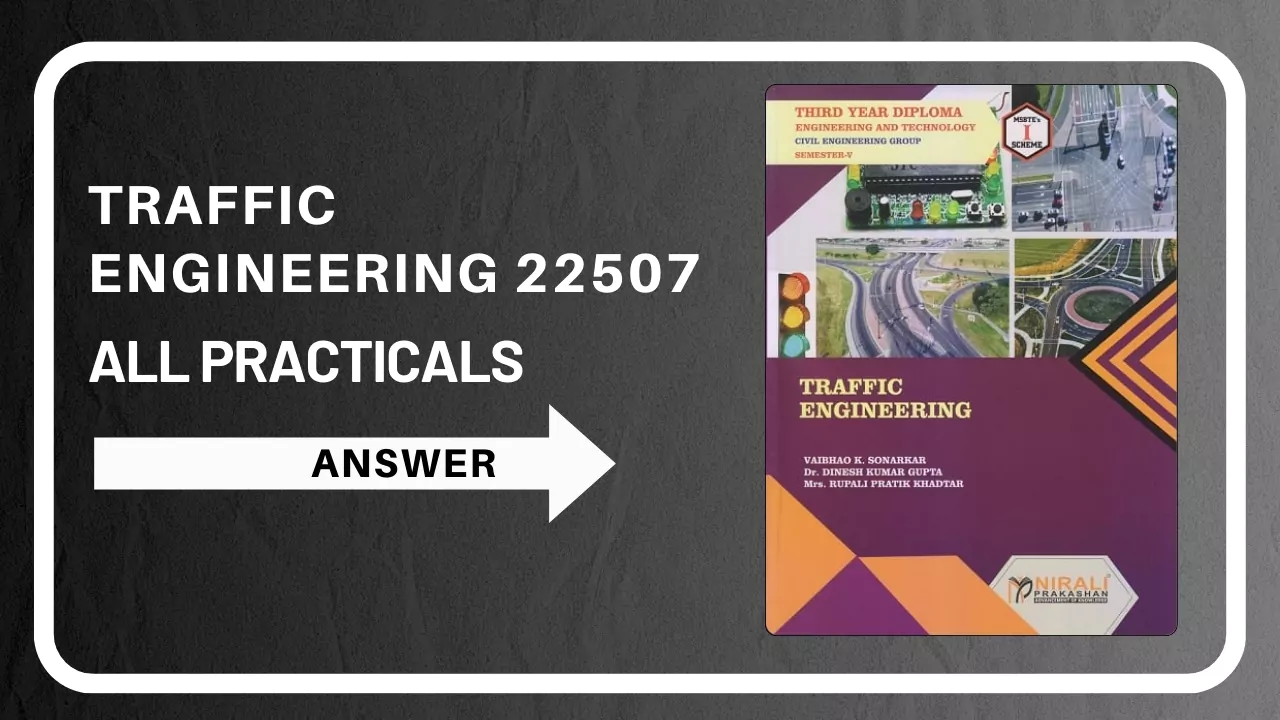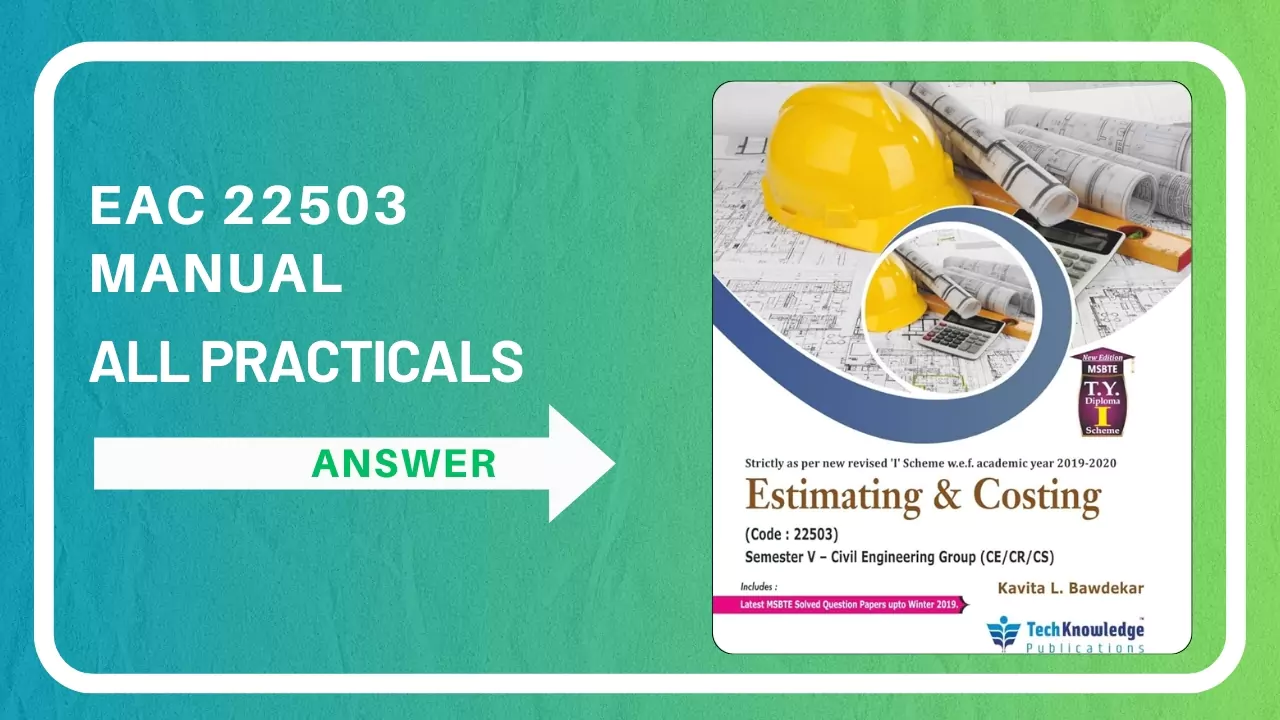Surveying 312339 Practical No: 04 Measure Fore Bearing and Back Bearing of survey lines of open traverse using Prismatic Compass
In this post we are going to perform surveying manual practical no.4. Measure Fore Bearing and Back Bearing of survey lines of open traverse using Prismatic Compass, Chain and cross-staff surveying can be used for small and fairly flat areas but in the case of large areas, it becomes essential to use some sort of instruments that help to observe the angles and directions of lines. These horizontal angles can be observed by using a prismatic compass.

|
| Surveying 312339 Practical No: 04 Measure Fore Bearing and Back Bearing of survey lines of open traverse using Prismatic Compass |
The bearing of the line is the horizontal angle made by the line concerning the north direction. Bearing observed in the progress of survey work and in the opposite of survey work are known as forebearing and back bearing respectively. The fore and back bearing of the line shows a difference of + 180 degrees when it is free from the nearby presence of magnetic substances. The instrument which is used to measure the bearing is known as a prismatic compass.
Procedure:
1. First collect all instruments from the survey lab.
2. Fix the prismatic compass over Station A.
3. The following steps of temporary adjustment of prismatic should follow before observing the baring of line AB. Centering: It is the process of keeping the instrument exactly over the station. For this drop the small piece of stone from the underneath of compass so that it will fall exactly over the peg fixed on the station point. Leveling: It is the process of keeping the compass level by using the ball and socket arrangement provided at the top of the tripod stand. When the graduated aluminum ring is started to swing freely the instrument is said to be leveled. Adjustment of prism: It is the process of focusing the prism by moving up and down its vertical run to ensure that readings are clearly visible.
4. Fix the ranging rod at station B.
5. Turn the prismatic compass until the ranging rod of station B is bisected by the horse hair of the object vane.
6. After that when the needle and graduated ring stop the oscillation observe the bearing of line which is fore bearing of line AB and note the same accurately.
7. Then shift the compass over station B repeat the procedure followed over station A and observe the bearing of line AB which is the back bearing of line AB.
8. Record the reading accurately.
9. Return back the instrument to the survey store.
Observation Table: (Perform Practical these readings are only for demo)
| Station | Line | Length (m) | For Bearing | Back Bearing | Difference (FB-BB) |
|---|---|---|---|---|---|
| A | AB | 50.00 | N 45° 30′ E | S 45° 30′ W | 90° |
| B | BC | 72.15 | S 12° 10′ E | N 12° 10′ W | 180° |
| C | CD | 38.42 | S 67° 45′ W | N 67° 45′ E | 180° |
| D | DE | 25.60 | W 20° 00′ S | E 20° 00′ N | 180° |
| E | EF | 100.00 | E 35° 15′ N | W 35° 15′ S | 180° |
| F | FG | 81.28 | N 82° 50′ W | S 82° 50′ E | 180° |
| G | GH | 47.30 | S 17° 20′ E | N 17° 20′ W | 180° |
- Fore Bearing and Back Bearing of line AB respectively are N 45° 30′ E & S 45° 30′ W.
- Line Multiple Lines (AB, BC, CD, DE, EF, FG, GH) have an exact 180-degree difference between forebearing and back bearing.
Practical Related Questions:
1. Explain error in compass survey.
Answer:



